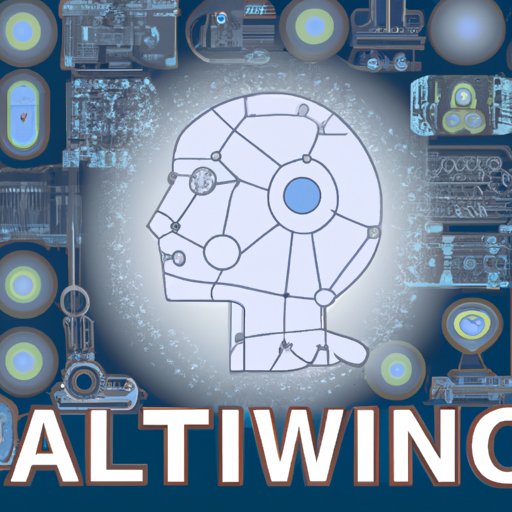Introduction
Artificial intelligence (AI) is a form of technology that mimics human intelligence and can be used to solve complex problems. It has become increasingly popular in recent years due to advances in computing power and data availability. AI can be used for tasks such as image recognition, natural language processing, and robotics. This article will provide an overview of AI and explain the basics of how it works.

Explaining the Basics of Artificial Intelligence
The core of AI is machine learning, which is the process of training algorithms to recognize patterns and make decisions based on those patterns. AI algorithms are trained using large amounts of data, which is then used to make predictions or recommendations. For example, an AI algorithm can be trained to identify objects in an image or to understand natural language. After the algorithm is trained, it can be used for various tasks such as facial recognition, speech recognition, and autonomous driving.
There are several types of AI algorithms, each with its own set of advantages and disadvantages. Supervised learning algorithms use labeled data to train the algorithm, while unsupervised learning algorithms use unlabeled data. Reinforcement learning algorithms use rewards and punishments to learn from their environment. Finally, deep learning algorithms use multiple layers of neural networks to learn more complex patterns.
Challenges Faced in Developing AI
Developing AI technology is not without its challenges. One of the biggest obstacles is hardware limitations. AI algorithms require powerful computers to process large amounts of data. Additionally, AI algorithms require access to large datasets in order to train properly. Without sufficient data, AI algorithms cannot learn and make accurate predictions.
Another challenge is algorithm complexity. AI algorithms are constantly evolving and becoming more complex. This requires developers to keep up with the latest developments in order to create effective algorithms. Finally, AI algorithms often require significant computational resources, which can be costly to implement.
Benefits of AI Technology
Despite the challenges, AI technology offers several benefits. One of the most notable is increased efficiency. AI algorithms can automate tedious tasks and reduce the amount of time spent on manual processes. This can result in increased productivity and reduced costs.
AI algorithms can also improve accuracy. By using AI algorithms to analyze data, businesses can make more informed decisions and better predict outcomes. For example, AI algorithms can be used to detect fraud or identify customer preferences more accurately than traditional methods.
Finally, AI technology can reduce costs by automating certain tasks. AI algorithms can take over mundane tasks, allowing employees to focus on more complex tasks. This can result in cost savings for businesses.
The Future of AI
As AI technology continues to evolve, its use cases are expanding. AI is being used in more industries and scenarios, such as healthcare and finance. Additionally, AI is becoming more accessible, with many companies offering cloud-based AI services. This has led to increased adoption of AI technology.
The automation of tasks is another trend that is likely to continue. AI algorithms can automate mundane tasks, freeing up employees to focus on more complex tasks. This could lead to increased efficiency and reduced costs for businesses.
Conclusion
AI technology is rapidly advancing, with more use cases and applications being developed every day. Despite the challenges faced in developing AI, it offers numerous benefits, including increased efficiency, improved accuracy, and reduced cost. As AI technology continues to evolve, its use cases will expand and its adoption will increase. In the future, AI algorithms may become even more common, leading to greater automation of tasks and increased efficiency.
(Note: Is this article not meeting your expectations? Do you have knowledge or insights to share? Unlock new opportunities and expand your reach by joining our authors team. Click Registration to join us and share your expertise with our readers.)
